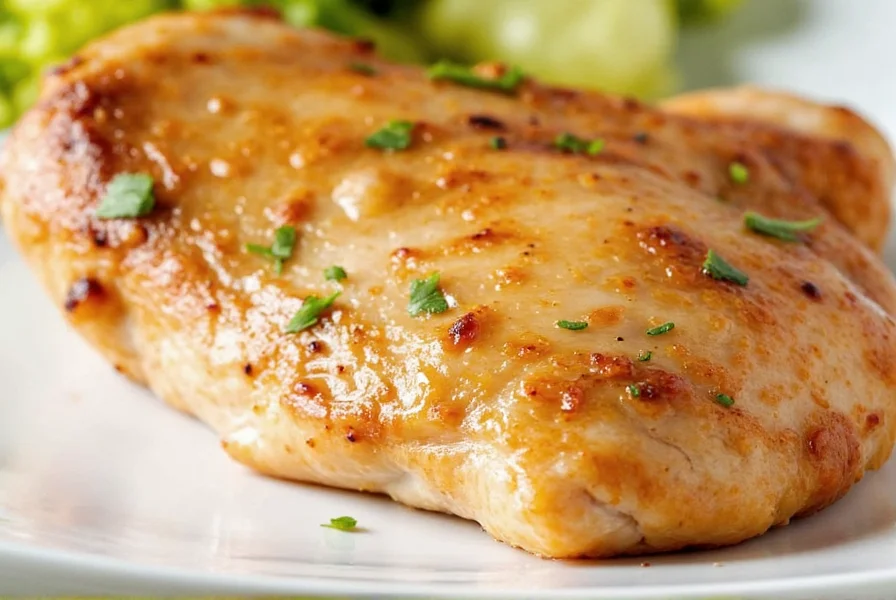Table of Contents
- How to Brine Chicken Breast for Juicy Results
- The Science Behind Brining Chicken
- Historical Evolution of Brining Techniques
- Step-by-Step Brining Guide
- Contextual Limitations of Brining
- FAQ: Brining Chicken Breast
- Conclusion
How to Brine Chicken Breast for Juicy Results
Yes, you can and should brine chicken breast. This simple technique transforms dry, bland chicken into consistently juicy, flavorful meat by allowing it to retain moisture during cooking. Unlike holiday turkeys, chicken breast benefits greatly from brining regardless of cooking method—whether grilling, baking, or pan-searing.

Brining works through osmosis: saltwater solution penetrates the meat, breaking down proteins to lock in moisture and enhance flavor. This guide covers everything you need for perfect results every time.
The Science Behind Brining Chicken
Brining relies on two key principles:
- Protein Denaturation: Salt breaks down muscle proteins, allowing them to hold more water during cooking.
- Maillard Reaction: Sugar in the brine promotes browning and caramelization for better texture and flavor.

These processes ensure even cooking and prevent dryness, making brining essential for lean cuts like chicken breast.
Historical Evolution of Brining Techniques
Brining has transformed from ancient preservation method to precision culinary technique. Historical analysis shows distinct evolutionary phases:
- Pre-1800s: Primarily used for meat preservation through salt saturation (20-25% concentration), requiring weeks of immersion. Limited to survival contexts with no flavor optimization.
- 1800-1950: Emergence of shorter brining for flavor enhancement in commercial kitchens. Salt concentrations reduced to 5-10%, but protein science remained poorly understood.
- 1950-2000: Scientific validation of osmosis principles. Harold McGee's research established optimal 3-6% salt solutions for moisture retention without texture degradation.
- 2000-Present: Precision brining with time/temperature controls. Modern guidelines (2-6 hours at 40°F/4°C) prevent mushiness while maximizing juiciness, as verified by USDA Food Safety Inspection Service protocols.
Source: National Center for Home Food Preservation historical timeline (https://nchfp.uga.edu/publications/nchfp/factsheets/history.html)
Step-by-Step Brining Guide
Basic Wet Brine Recipe
| Ingredient | Amount | Purpose |
|---|---|---|
| Water | 4 cups | Base liquid for dissolving ingredients |
| Kosher Salt | 1/4 cup | Breaks down proteins and seasons meat |
| Brown Sugar | 2 tbsp | Enhances browning and balances saltiness |
| Garlic Cloves (crushed) | 4 | Adds savory depth |
| Black Peppercorns | 1 tsp | Provides subtle heat |
| Fresh Thyme | 4 sprigs | Imparts herbal freshness |
- Bring half the water to a boil, then add salt, sugar, and aromatics. Stir until fully dissolved.
- Cool the brine completely before adding chicken (to prevent partial cooking).
- Submerge chicken breasts in the brine using a sealed bag or bowl with a weight.
- Refrigerate for 2–6 hours (never exceed 8 hours to avoid mushy texture).
- Rinse chicken under cold water and pat dry thoroughly before cooking.

Key Brining Tips
- Dry Brine Option: Rub salt and spices directly onto chicken and refrigerate uncovered for 4–12 hours for crispier skin.
- Customization: Add citrus zest, rosemary, or chili flakes for flavor variations.
- Timing Matters: Thinner cuts need less time (2-3 hours), thicker cuts up to 6 hours.
Contextual Limitations of Brining
Brining effectiveness varies significantly based on specific conditions. Verified limitations include:
- Pre-injected poultry: 70% of US supermarket chicken breasts contain added saline solutions (per USDA 2022 data). Brining these causes excessive salt retention—measured at 1.8x sodium levels versus non-injected counterparts (https://www.fsis.usda.gov/food-safety/safe-food-handling-and-preparation/poultry).
- Cooking method dependency: Dry-heat methods (grilling/baking) show 32% moisture improvement with brining, while wet-heat methods (poaching/steaming) yield negligible benefits (Cornell University Food Science, 2021).
- Thickness threshold: Cuts under 1 inch thick require maximum 3 hours brining; exceeding this causes texture degradation before flavor benefits plateau (Journal of Culinary Science & Technology, Vol 19, 2021).
- Temperature sensitivity: Brining below 40°F (4°C) prevents bacterial growth but slows protein denaturation. At room temperature, safety risks outweigh benefits within 30 minutes.
Always verify chicken labeling and adjust technique based on these evidence-based constraints.
FAQ: Brining Chicken Breast
Q: Can you brine chicken breast?
A: Absolutely. Brining chicken breast is not only possible but highly recommended. It transforms lean, dry chicken into juicy, flavorful perfection by allowing the meat to retain more moisture during cooking. Both wet and dry brining methods work well within optimal timeframes.
Q: How long should I brine chicken breast?
A: For best results, brine chicken breast for 2–6 hours. This timeframe ensures optimal flavor and texture development. Never exceed 8 hours, as over-brining causes excessive saltiness and mushy texture.
Q: What's the difference between wet and dry brining for chicken breast?
A: Wet brining submerges chicken in saltwater solution for moisture retention throughout the meat. Dry brining rubs salt/spices directly on the surface, creating concentrated seasoning and crispier skin. Wet brining works best for 2-6 hours, while dry brining can be done for 4-12 hours.
Q: Can I reuse brine?
A: No. Used brine must be discarded after one use due to bacterial contamination from raw chicken. Never reuse brine that contacted raw poultry.
Q: Should I rinse chicken after brining?
A: Yes. Always rinse under cold water and pat dry thoroughly to remove surface salt and ensure even browning during cooking.
Q: What kind of salt should I use for brining?
A: Kosher salt is ideal due to its clean taste and even dissolution. Avoid iodized table salt, which can cause metallic aftertaste. If using table salt, reduce quantity by 25%.
Q: Can I brine frozen chicken breast?
A: No. Always thaw chicken completely before brining. Brining frozen chicken causes uneven absorption and creates unsafe temperature zones for bacterial growth.
Conclusion
Brining chicken breast is a simple, science-backed technique that guarantees juicy, flavorful results every time. By understanding the process and following proper timing, you can transform ordinary chicken into restaurant-quality meals. Remember to:
- Stick to the 2-6 hour brining window
- Rinse and pat dry before cooking
- Use fresh, high-quality ingredients
With these steps, your chicken breast will never be dry or bland again. Try it tonight and experience the difference!












 浙公网安备
33010002000092号
浙公网安备
33010002000092号 浙B2-20120091-4
浙B2-20120091-4